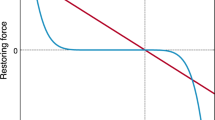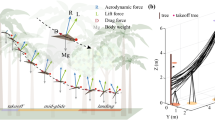Abstract
FLYING swarms of locusts often cannot be effectively attacked from the air because of the danger to the aircraft. Attention is therefore focused on the circumstances in which a swarm will remain on the ground. In Kenya the desert locust, Schistocerca gregaria (Forsk.), roosts overnight in trees and shrubs and usually takes to flight at some time during the morning. The prediction of the time of take-off is important in deciding the number of sorties an aircraft can make before the locusts leave, and therefore the number of aircraft required and the distance from which they can usefully operate.
This is a preview of subscription content, access via your institution
Access options
Subscribe to this journal
Receive 51 print issues and online access
$199.00 per year
only $3.90 per issue
Buy this article
- Purchase on Springer Link
- Instant access to full article PDF
Prices may be subject to local taxes which are calculated during checkout
Similar content being viewed by others
Author information
Authors and Affiliations
Rights and permissions
About this article
Cite this article
GUNN, D., PERRY, F., SEYMOUR, W. et al. Mass Departure of Locust Swarms in Relation to Temperature. Nature 156, 628–629 (1945). https://doi.org/10.1038/156628a0
Issue Date:
DOI: https://doi.org/10.1038/156628a0
This article is cited by
-
A Basis for a General System of Insect Migration and Dispersal by Flight
Nature (1960)
-
Aircraft Attack on Locusts
Nature (1948)
Comments
By submitting a comment you agree to abide by our Terms and Community Guidelines. If you find something abusive or that does not comply with our terms or guidelines please flag it as inappropriate.



